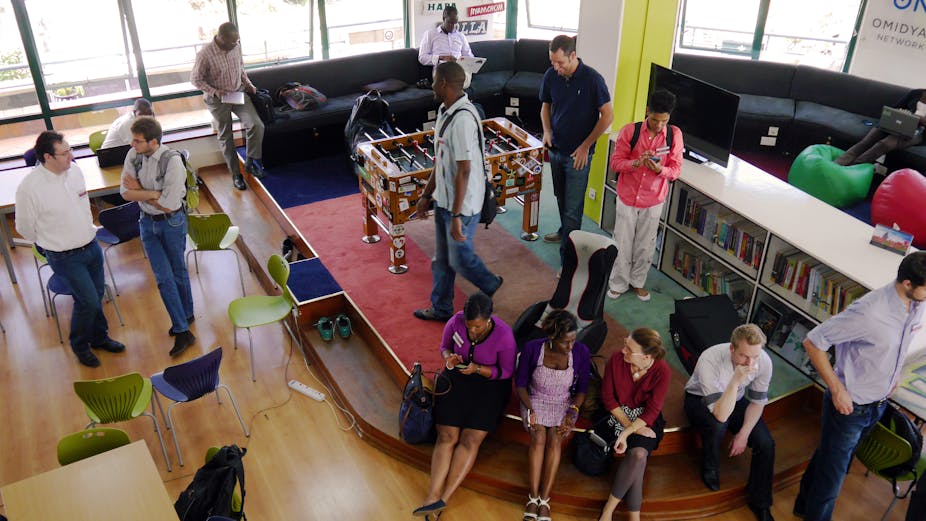Recent reports estimate that by 2020 1.55 billion workers will be responsible for work that does not confine them to a desk. Already, up to 80% of employees work at least one day a week out of the office.
Co-working, where employees and the self-employed share workspace, ideas and knowledge, started in 2005 in San Francisco. Once the domain of techies working on start-ups, co-working spaces continue to evolve rapidly.
In 2017 it is estimated over one million people will work from co-working spaces. In 2016, a single co-working company recorded a valuation of US$16 billion dollars, highlighting the growth of an industry that didn’t exist just over a decade ago.
Users of co-working spaces often report feeling that they are part of a social movement. In co-working spaces, helping each other out, even those you have just met, is the norm. Indeed, the co-working movement prides itself on a set of core values, community, openness, collaboration, sustainability and accessibility.
This can be a refreshing change for many employees where the design of the workplace and the politics of their organisation means they are simply too tired, stressed or distracted to help their colleagues. Globally, organisations such as Merck, GE and the Guardian newspaper are regularly using co-working spaces for their employees. Research shows that users report increases in learning, new networks and the benefits of working close to the users of their services or products.
The promise of these anecdotal stories is now being supported in emerging research. In a study reported in Harvard Business Review, researchers from the University of Michigan found that users of co-working spaces experienced greater meaning from their work, and experienced thriving at work far more than their office based colleagues. Additionally, with many choosing to work from co-working spaces closer to home, commuting times and traffic congestion are reduced.
Some research however indicates that the inherently social nature of co-working spaces may lead to similar issues experienced by regular office users such as distraction and lack of privacy. Another study found that the co-working space itself was not enough to encourage connections and collaboration, and that a space host may be necessary to catalyse these relationships.
These changes to the way we work are bringing a focus on both the role of the stand alone workplace, and the design of cities. As co-working spaces evolve to meet the demand of workers for flexible, autonomous and creative work environments, broader changes are occurring in how we work and live.
Co-working spaces offer the potential to address other challenges facing our future cities as they provide accessible space for individuals to work, attend learning events and become part of a like minded community. This is important given predictions regarding changes to the urban landscape.
The Australian Bureau of Statistics predicts a 65% increase in the number of single person households in Australia. For Australia particularly, housing affordability continues to be a significant issue. As governments and cities grapple with ways to address these issues, new projects in the collaborative economy are showing promise in addressing a number of these issues.
In London, the world’s largest co-living community opened its doors to 550 residents. While residents have their own units with bedroom, bathroom and kitchenette, the project offers all inclusive rent with access to a restaurant, co-working spaces, wifi, gym, cinema, spa, larger kitchens and dining rooms. Aside from convenience and flexibility, early indications suggest that co-living residents are attracted to the sense of community. While empirical research on co-living is yet to emerge, 96% of residents of co-housing communities report increased life satisfaction according to research.
As similar projects are underway globally, research suggests this trend will increase as solutions are offered for adults at all life stages.

